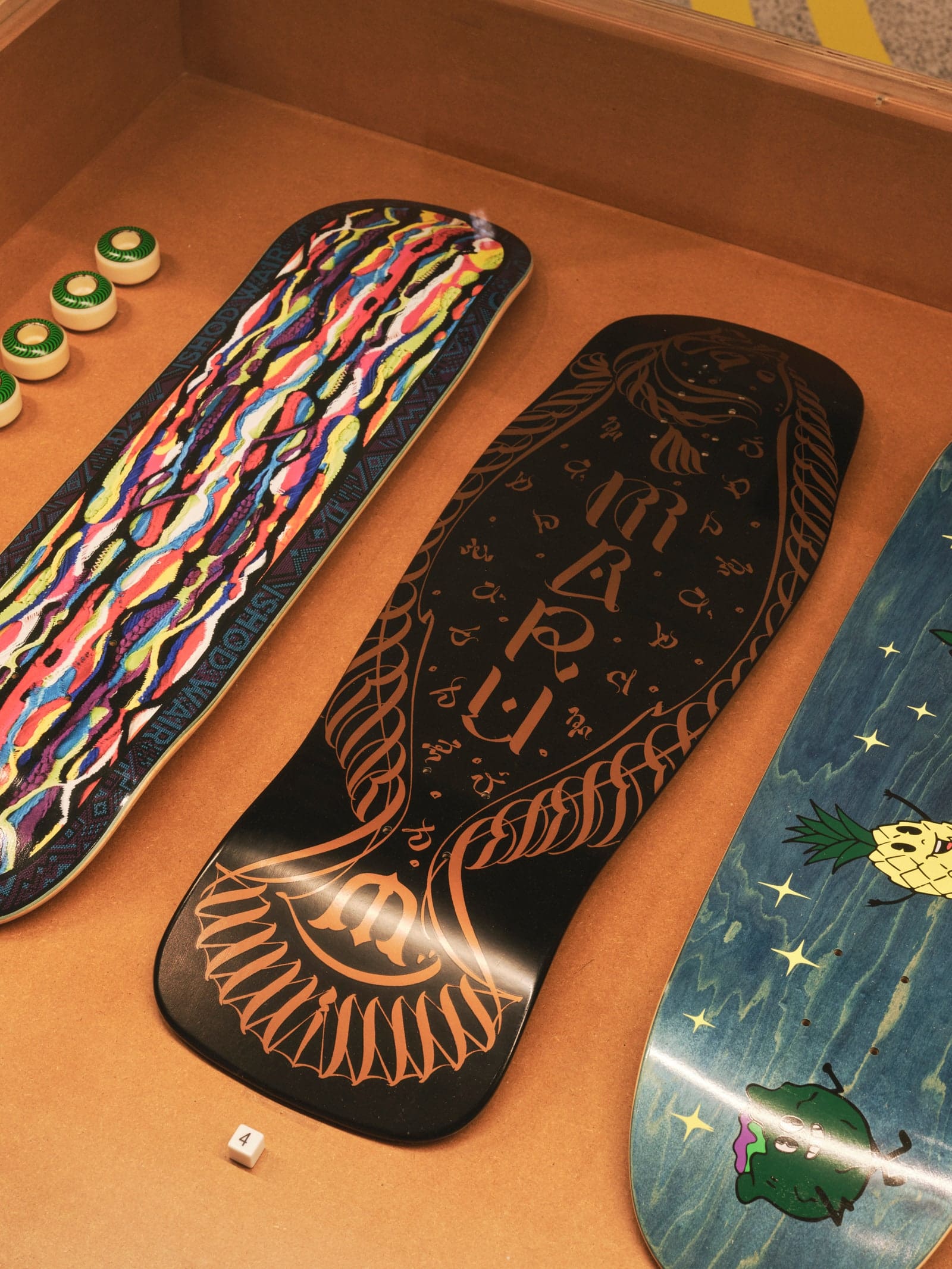Craig McDean
Few sporting cultures have influenced fashion as heavily as skateboarding. It’s rare for a season to pass without some wink, nod, or homage to the midcentury California-born pastime (and, as of 2020-turned-2021, Olympic category). Gucci offered up skateboard bags on the runway in Seoul for its Cruise 2024 collection, while Chopova Lowena presented its spring/summer 2024 offering in a skatepark, with aesthetics nodding to “the skater boy you love”. Of his spring/summer 2024 concept, Bluemarble’s Anthony Alvarez said he has always been intrigued by California’s skate culture and its “forever young mindset”. Even Miu Miu, recently crowned the hottest brand in the world by the Lyst Index, showed ultra-low riding chino pants and baggy shorts – silhouettes that have long been associated with skatewear – on its latest runway.
More than most, the sport is a catwalk mainstay. And now, its 75-year history is being examined through a neatly conceived and tightly edited exhibition called Skateboard, supported by Converse, at London’s Design Museum. A book by the same name is being released by Phaidon in tandem.
Skateboard examines the fundamentality of its namesake device. The show is an object study at its core; it tracks the backstory of the board across generations’ worth of iterations (one 2000’s deck features baroque squiggles called “money shapes” on its edge, for instance). Yet it also provides a crisp, clear flow of the world-building that has occurred around the apparatus.

Over 100 chronologically advancing decks, their widely varied graphics, images sourced from over 40 photographers in multiple decades, and spin-off ephemera (such as zines and decals) illustrate this rise of skateboarding not only as an athletic discipline but also as an aspirational lifestyle. A 1960s-era Life cover, for example, shows a woman in neat white trousers riding against a big blue sky – while doing a handstand on her board, no less.
The show’s curator, the industrial designer and author (and skater himself) Jonathan Olivares, calls the decks the “spine” of the exhibition, but that “you get everything, the style of [skateboarding], the universe of it, through them”. The exhibit follows a trompe l’oeil double yellow line – the kind you see on streets, the natural realm of skateboarding – weaving between vitrines at waist-level and beneath supersized photographs that hang from the ceiling.

There are interesting moments when the sport and fashion collide. Olivares points to an image of a short-short wearing subject, circa the 1960s, and says: “Even though it gets cold in England, skaters in the UK would sometimes wear shorts for the feeling of California.” And Converse itself – best known amongst fashion-philes for its popular and permanent collaboration with Commes des Garçons – features throughout. The Nike-owned company wasn’t founded as a skateboarding brand, but it has long been assimilated within the skate community (it also has a pro skating team).
One deck, a twin tail used by the skater Ishod Wair in 2013, features a print depicting a 1990s-era Coogie sweater, made popular in part by the rapper Notorious BIG. Olivares makes an interesting point in this regard. He says chapters of skateboarding style, and by extension the fashion around them, have been directly inspired by music-based cultural shifts. “Punk had a huge influence on skate in the early 1980s,” he says. “It was massive. By the mid-1990s, though, skate just fully adopted hip-hop, with the one exception being you’d be wearing bulky skate shoes. Whether you lived in the New York suburbs or in Queens, you wanted to look like Mobb Deep when you skated. Not everyone, but a lot of people.”

Eyeing a Palace Skateboards deck, I ask Olivares about high fashion’s more contemporary – and direct – embraces of skateboarding. Palace is a London-based label founded by a group of guys who used to skate the city’s South Bank. It was born with humble, sport-specific beginnings. Yet in 2022, Palace released a well-received global collaboration with Gucci. Supreme, the New York-based brand that started as a skateboard label, reached feverish recognition when it collaborated with Louis Vuitton in 2017. The late designer Virgil Abloh, who was also a skater, recognised the sport’s wardrobe appeal and weaved it into his work at both Off-White and Louis Vuitton (post-Supreme). There are many other examples.
“I think it’s all good,” Olivares says. “Skaters can tend to be a little cagey, but I think of the late editor of Thrasher, Jake Phelps, who said he loved every aspect of it. That there’s really no wrong answer in skateboarding.” (Thrasher, for those unfamiliar, is an indie skate magazine founded in 1981 – for a time in the 2010s, its typeface logo became the it motif on the street style scene.)
“When we first started this, the museum thought maybe we’d put in a ‘skate fashion’ section. My feeling was like, that’s just part of the game. All you have to do is look.”
Skateboard opens at the Design Museum from 20 October.
This article was originally published on British Vogue.
